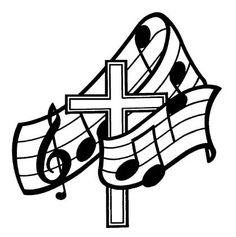ON THE HISTORY OF THE CHURCH OF ENGLAND
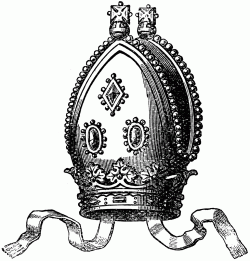
ON THE HISTORY OF THE CHURCH OF ENGLAND
The Rev’d. Stephan W. Heimann
Deaconess Tina Jinkins
Beginnings The Church in “Britannia” was planted by merchants from the Middle East, who brought their wares to the islands and spoke of their faith to the inhabitants. In the Anglican tradition, one of the best known of these was Joseph of Arimathea, the man who loaned his tomb for the burial of our Lord after He died on the cross. Joseph was a silversmith, and he brought his silver products to Glastonbury, where he spoke of the Christian Faith and led others to follow Jesus.
The activity of various giants of the Faith are recorded in early chronologies of English Church activity. Two bishops from the British Isles were present at the First Council of the Church of Arles. Tertullian (200) and Origen (240) offered the first written accounts of Christian activity. One of the best-known chroniclers of English Church history is The Venerable Bede, whose accounts of that history are still available today. We are all familiar with St. Patrick, who brought Christianity to the Irish people. Less familiar to us are names like St. Aidan and St. Alban (the first Christian martyr in England), but they and many others played an important part in developing a Celtic Church in the Isles.
Rome Enters the Picture
In the sixth century, Pope Gregory I (the Great) sent St. Augustine (not the African Bishop of Confessions and City of God) to convert the Britons. He found a practicing faith already there and set up his headquarters in Canterbury, which is still the center of much Anglicanism today.
Conflicts developed between the Roman practice which Augustine sought to impose and the Celtic practice of Christianity already in practice, and, in 644, an Abbess name Hilda called opposing sides together for a Council in which most of the Roman rules were adopted. There remained, however, a sense of rebellion and independence in the English Church, which would contribute to its total independence from the Roman Catholic Church.
The first formal allegiance to the Pope was declared by King John in 1213. In the centuries that followed, different kings asserted their independence from Rome in various matters. The feud between Henry II and St. Thomas Becket is well documented. A lesser known conflict between Edward II and Rome (1350s-60s) also occurred, when the king sought to weaken the vassalage ties between the English Church and Rome. John Wycliff translated the Bible into English and was critical of lax clergy and corrupt bishops, so typical of the Medieval Church.
Reformation
Between the time of Edward III and Henry VIII, there continued to be abuses of pluralism, absenteeism, and corruption among the Roman clergy, but historians agree that the clergy were really the ones holding the government together. By the beginning of the sixteenth century, Humanism was growing and the Continental Reformations of Martin Luther and John Calvin had disciples in the British Isles.
Henry VIII was a strong Catholic theologically; in fact, he had been praised by the Pope for his work on the Seven Sacraments against the writings of Martin Luther. He marital turmoils and the growing dissatisfaction with all the money being sent to Rome resulted in a final break with Rome in the 1530s. All Catholic doctrine and practice remained in place, including the Mass in Latin, belief in Transubstantiation, and clerical celibacy. Henry, however, had Parliament and the English Bishops designate him as “Supreme Head of the Church in England.” He, not the Pope, was head of the English Church. The ancient and honorable polity of three-fold ministry of Bishops, Priests, and Deacons, in Apostolic Succession, remained in place. During this time, the cup was restored to the Laity and the English Coverdale Bible was written and placed in the churches.
The See-Saw of Control
With Henry’s death in 1547, the sickly Edward VI took the throne at the age of nine. The government of England was totally in the hands of regents, who were, to a man, Calvinist Protestants. In 1549, the first English Prayer Book was published and made mandatory for use in all English Churches. It had been authorized by Thomas Cranmer, largely during the reign of Henry VIII, and was a strong Catholic Prayer Book, making much use of the Sarum (Roman Rite with adaptations by the Diocese of Salisbury).
With the death of Henry, and the control of the government in the hands of Calvinists, a new Prayer Book was issued in 1552, totally Protestant in nature, although retaining the Episcopacy. Cranmer, Archbishop of Canterbury since his appointment by Henry, instituted “visitations” in which vestments, statues, rood beams, stained glass, and altars were destroyed.
Edward died in 1553. An effort to seat Lady Jane Grey on the throne was unsuccessful, and Mary I, daughter of Henry by Katherine of Aragon, took over the rule of England. Mary reunited the Church of England with Rome and eliminated the reforms instituted by her father and stepbrother. With her marriage to Philip of Spain in 1555, English Protestants either fled to the continent or faced execution by burning. Archbishop Cranmer was one of those who met his death at the stake, although not so much for his Protestantism as for his part in the attempt to enthrone Lady Jane. Nicholas Ridley and Hugh Latimer met the same fiery fate.
Elizabeth I
Mary died in 1558, and was succeeded by Elizabeth I. Personally, Elizabeth was a strong Catholic and would have desired to re-establish the reformed Catholicism of her father. However, she had to deal with the recusants on one hand (those who would return England to the Roman Catholic Church) and the reformers on the other (many of whom had lived in Geneva and Zurich during Mary’s reign, and were fully convince of the rightness of Calvinism and even some Zwinglian doctrine). Both sides, if they did not get some of what they wanted, were prone to violence and to efforts to overthrow the crown.
Elizabeth’s decision was what came to be known as the Elizabethan Settlement, which made concessions to both Catholic and Reformed elements of English religion. She retained the worship of the Church in the vernacular, put a strong emphasis on two Sacraments only (Baptism and Holy Communion), and the practice of administering Holy Communion in both kinds. The Articles of Religion, revised from Cranmer’s Forty-two to Thirty-nine, were Protestant in character, although future generations would try to interpret them in a Catholic manner.
On the other hand, the Episcopacy was maintained, the use of vestments was allowed as a general practice, and much of the Catholic language used in the Sacramental Rites was maintained. The 1559 Prayer Book was not a radical departure from 1552, but there was enough of a difference in the Catholic direction to provide some solace for her Catholic subjects but consternation to the Protestants. Under Archbishop Matthew Parker, however, ornaments and statuary did not fare much better than they had under Cranmer.
With the Prayer Book changes and official sanctioning of the Thirty-nine Articles (1563), came the Act of Uniformity and the Act of Supremacy, which established the Prayer Book as the official usage in worship, and the English Monarch as head of the Church of England.
The Stuart Kings
James I
The unmarried and thus childless Queen Elizabeth’s death in 1603 resulted in the calling of Parliament of James VI, King of Scotland and son of Mary, Queen of Scots, to become King James I, uniting England and Scotland under one ruler.
James had been raised in the Scottish Presbyterian Church, but had grown weary of the dour and austere Calvinist practice of the Christian faith. He was a strong High Churchman in his beliefs and favored those of the High Church persuasion, largely because they tended to be more loyal to the crown and less prone to sedition and rebellion.
Under the rule of James I, the tradition of outstanding theologians, bishops, and priests, whose writing had begun in the reign of Queen Elizabeth I, continued. Now called The Caroline Divines (named for Charles I), men like Richard Hooker, Lancelot Andrewes, Jeremy Taylor, and Nicholas Farrar wrote outstanding works of theology, polity, and piety which earned the group the nickname Stupor Mundi – the wonder of the world.
James was influential in the composing of the Book of Common Prayer 1603, and commissioned a group of scholars to write and new translation of the Bible, the first since Tyndale had done so almost a century earlier. That translation has become known as The King James Version of the Bible, and it is perhaps the best-known translation of the Holy Bible.
Although extravagant in certain areas of his life, James was wise in his rule, enforcing (albeit gently) the Via Media of Elizabeth, and fending off efforts of the extremists to radically alter the English religious landscape.
Charles I
Charles succeeded his father to the throne. Although a learned and devout man, dedicated to the Episcopacy, the Prayer Book, and the English Catholic religion, Charles was immoderate in his enforcement of Anglicanism. He inherited his father’s belief in the “Divine Right of Kings,” but was far more eager than James to put it into practical action. His appointment of William Laud as Archbishop of Canterbury brought persecution of those who disagreed with either Charles or Laud in virtually any matter. When Parliament refused to do his bidding, Charles disbanded it in 1629, and it remained dissolved for eleven years until he was forced to call it together by public opinion and the fact that he needed money to pay for the war being fought with Scotland.
The Calvinist practice of religion gave rise to a group known as Puritans. Not only did the Puritans seek to rid the English religion of all vestiges of Roman (read Catholic) faith and practice, but they sought to replace even the Presbyterian form of government endorsed by Calvin with a congregationalist form of Church polity.
Charles’ biggest mistake was to try to enforce episcopacy (bishops) and a Prayer Book, far more catholic than the one in England, on the Church of Scotland, which had drifted more toward Presbyterianism in the years following 1580.
Led by Oliver Cromwell, an army of Puritans known as Roundheads, began a Civil War in 1641, following the breakout of war between England and Scotland in 1638, with Puritans in England joining Scottish Presbyterians, in an effort to replace Charles and the English Church with a “Protector” and Congregationalism. Laud was imprisoned and beheaded in 1644; Charles’ army fell to the Roundheads; and He was subsequently beheaded on January 30, 1649.
Restoration
After a period in which the Calvinist Commonwealth replaced the Anglican Monarchy, Oliver Cromwell died in 1658. His son Richard was a failure as “Protector” and resigned in 1660. Charles II, the rightful heir after Charles I, was invited to return from exile and take the throne. Staunch Anglicans were restored to office, the episcopacy was again the approved form of Church government, and a new Prayer Book was issued in 1662. That Prayer Book is the only official Prayer Book of the Church of England today.
Under Charles II, a series of Acts were passed by Parliament, which took action against all opponents of the Church of England, whether Roman Catholic, Presbyterian, or some of the other Protestant groups which had sprung up in England following the Reformation.
James II and the “Glorious Revolution”
Charles II converted to Roman Catholicism on his deathbed, and his brother James II, who succeeded him on the throne in 1685 made no secret of the fact that he was a Roman Catholic. While not so presumptuous or foolish as to attempt returning the English Church to Rome (the monarch had lost his absolute power to determine English religion after the Civil War), James made no secret of his leanings and set some things in motion which caused great consternation in the country. Numerous acts were introduced which modified the restrictions placed on non-Anglicans. Roman Catholics were appointed to positions of authority and introduced into the faculties of Oxford and Cambridge. Clergy were punished for preaching against Rome.
In 1687, James II published the Declaration of Indulgence, which suspended all penal laws against non-conformists – Roman or otherwise. Seven Bishops refused to read the Declaration to their clergy, or cause it to be read in their congregations. They were imprisoned in the Tower and tired for sedition, but they were found not guilty.
A few days before the trial of the bishops, James’ queen had borne a son. Those who had become increasingly discontent with all the things James was doing decided that it was, at last, time to bring the Stuart dynasty to an end. They invited William of Orange and his wife Mary to come to England from Holland and assume the throne. In what has been called the “Glorious Revolution,” the armies of William invaded England in November of 1688. On December 18, James fled England, and the reign of William and Mary, officially Anglican but quite friendly to Calvinists and Rationalists, began.
For a number of Anglican Bishops, including the Archbishop of Canterbury and some who had been tried for sedition by the royal court, this posed a dilemma. They had taken an oath to their king and, even though they might disagree with him, they could not take an oath to another rule while James II was still alive. These men, known as Non-Jurors (non-swearers to loyalty to the new monarch) fled to Scotland, where they aligned with the Episcopal Church of Scotland.
Deprived of their connection with the English Church, they were also relieved of some of the restrictions she had imposed, and were responsible for a new Scottish Liturgy, closer in content and theology to the First English Prayer Book (1549), from which our American Prayer of Consecration is taken.
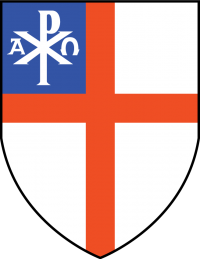
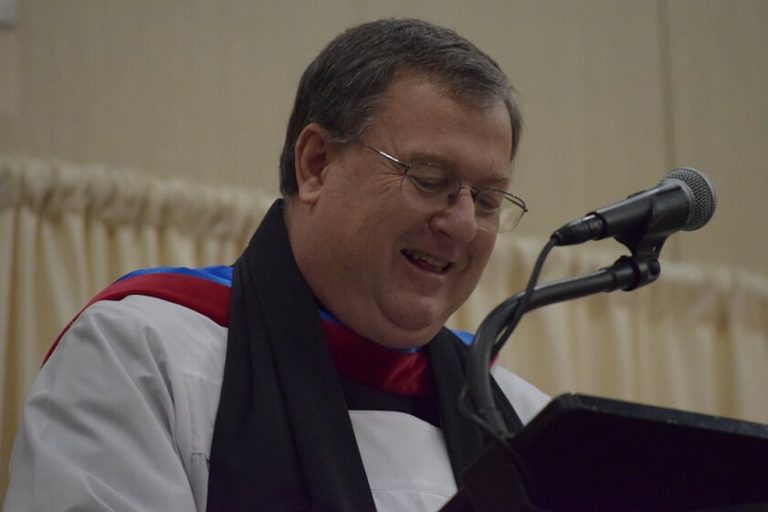

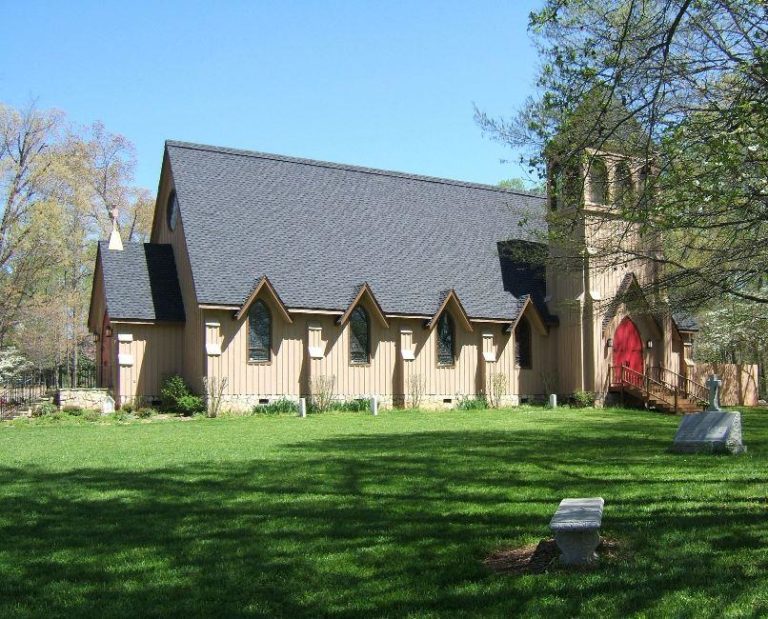
![How did the early Christians worship? Let’s us read of early church worship. The First Apology (St. Justin Martyr) [a.d. 110-165.]](https://www.stmichaelsanglican.org/wp-content/uploads/2018/04/church-history1-e1562081769989.jpg)
